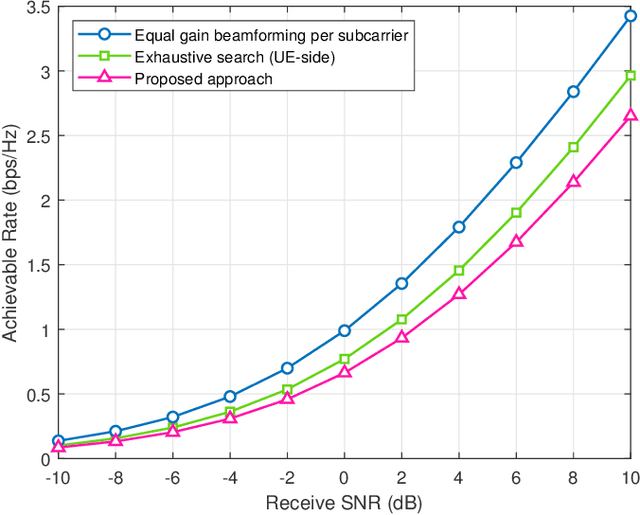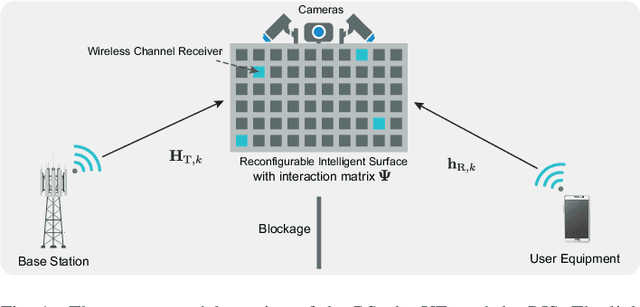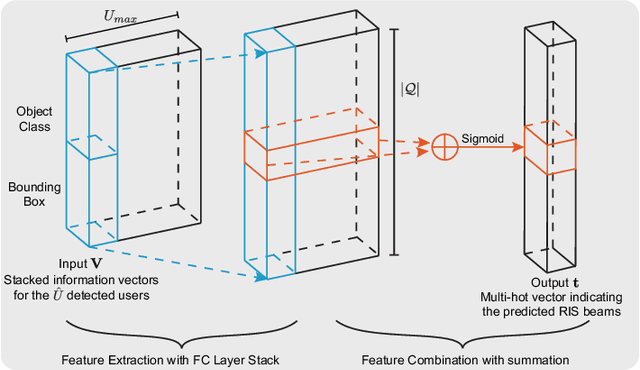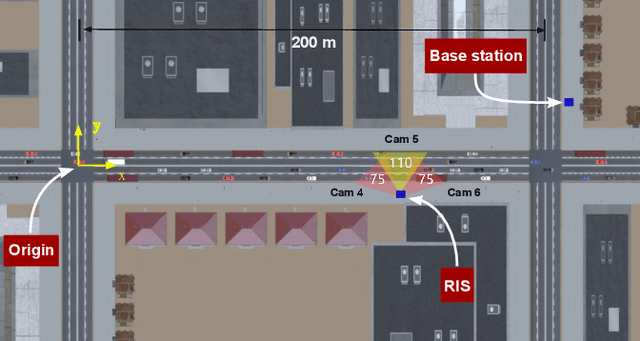Ahmed Hindy
Sensing Aided Reconfigurable Intelligent Surfaces for 3GPP 5G Transparent Operation
Nov 24, 2022



Abstract:Can reconfigurable intelligent surfaces (RISs) operate in a standalone mode that is completely transparent to the 3GPP 5G initial access process? Realizing that may greatly simplify the deployment and operation of these surfaces and reduce the infrastructure control overhead. This paper investigates the feasibility of building standalone/transparent RIS systems and shows that one key challenge lies in determining the user equipment (UE)-side RIS beam reflection direction. To address this challenge, we propose to equip the RISs with multi-modal sensing capabilities (e.g., using wireless and visual sensors) that enable them to develop some perception of the surrounding environment and the mobile users. Based on that, we develop a machine learning framework that leverages the wireless and visual sensors at the RIS to select the optimal beams between the base station (BS) and users and enable 5G standalone/transparent RIS operation. Using a high-fidelity synthetic dataset with co-existing wireless and visual data, we extensively evaluate the performance of the proposed framework. Experimental results demonstrate that the proposed approach can accurately predict the BS and UE-side candidate beams, and that the standalone RIS beam selection solution is capable of realizing near-optimal achievable rates with significantly reduced beam training overhead.
Camera Aided Reconfigurable Intelligent Surfaces: Computer Vision Based Fast Beam Selection
Nov 14, 2022



Abstract:Reconfigurable intelligent surfaces (RISs) have attracted increasing interest due to their ability to improve the coverage, reliability, and energy efficiency of millimeter wave (mmWave) communication systems. However, designing the RIS beamforming typically requires large channel estimation or beam training overhead, which degrades the efficiency of these systems. In this paper, we propose to equip the RIS surfaces with visual sensors (cameras) that obtain sensing information about the surroundings and user/basestation locations, guide the RIS beam selection, and reduce the beam training overhead. We develop a machine learning (ML) framework that leverages this visual sensing information to efficiently select the optimal RIS reflection beams that reflect the signals between the basestation and mobile users. To evaluate the developed approach, we build a high-fidelity synthetic dataset that comprises co-existing wireless and visual data. Based on this dataset, the results show that the proposed vision-aided machine learning solution can accurately predict the RIS beams and achieve near-optimal achievable rate while significantly reducing the beam training overhead.
 Add to Chrome
Add to Chrome Add to Firefox
Add to Firefox Add to Edge
Add to Edge